
| What is Flavor and Fortune? |
| How do I subscribe? |
| How do I get past issues? |
| How do I advertise? |
| How do I contact the editor? |
Read 12688047 times
Connect me to:
| Home |
| Articles |
| Book reviews |
| Letters to the Editor |
| Newmans News and Notes |
| Recipes |
| Restaurant reviews |
| Article Index (all years, slow) |
| List of Article Years |
| Article Index (2025) |
| Article Index (last 2 years) |
| Things others say |
| Related Links |
| Log In... |
| Authors |
| Categories & Topics |
TOPICS: Asian Metro Food magazine; Dragon fruit; Baozi is not jiaozi
| by Jacqueline M. Newman |
Newman's News and Notes
Summer Volume: 2007 Issue: 14(2) page(s): 6 and 7
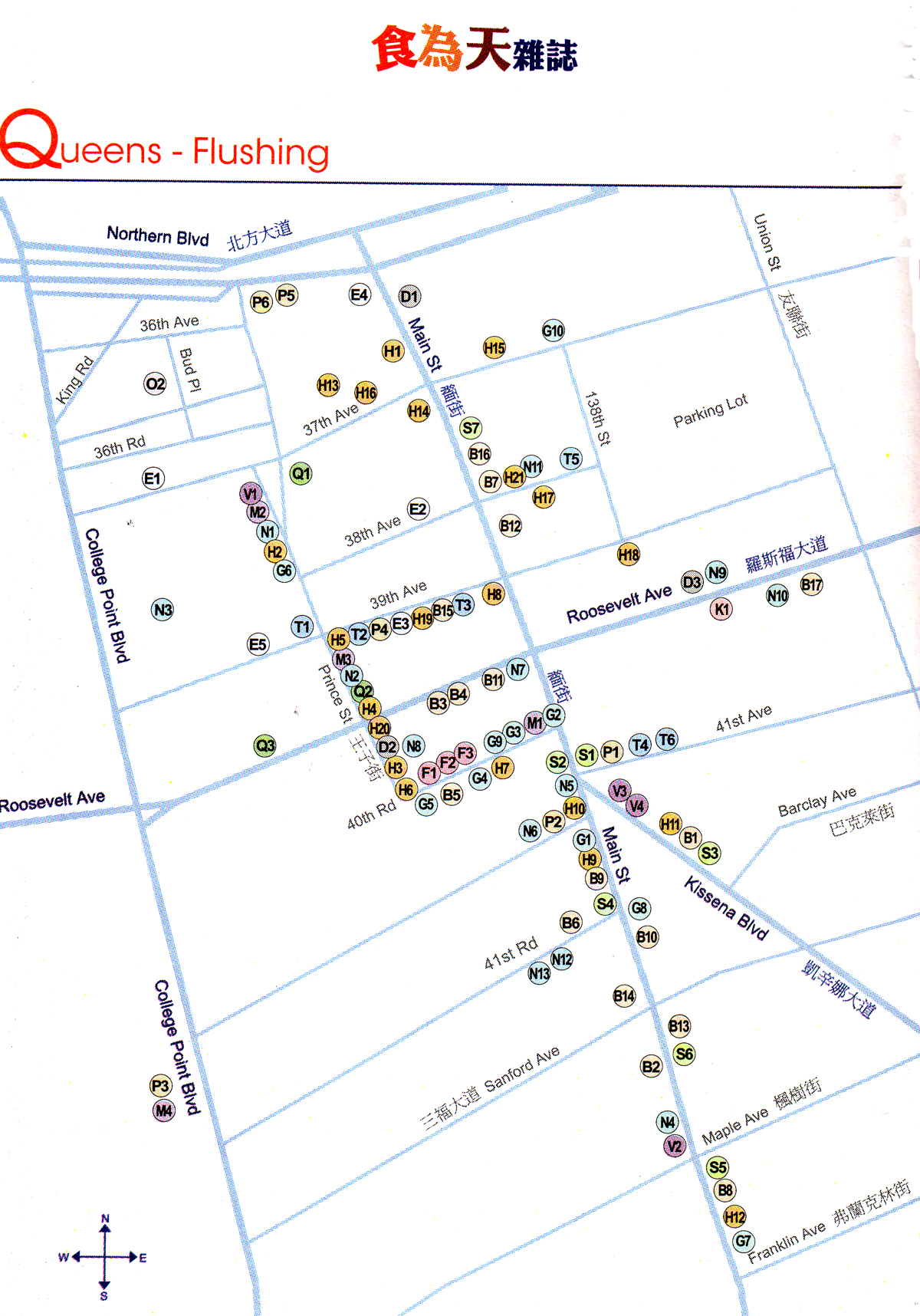 ASIAN METRO FOOD is a new free publication. It is almost all in Chinese, has lots of advertisements, gives almost all restaurant names in Chinese, includes their phone numbers, uses a star-restaurant-rating, and has matching maps by New York City region. This enables on to locate the street each restaurant is on. They are on these maps as a circle, by type of food served. If Hong Kong style, look for an 'H' and if Taiwanese-style find the 'T' and so forth. In this new publication there are Dongbei restaurants under the letter 'D' with the three reviewed in this first issue, all in Flushing.
ASIAN METRO FOOD is a new free publication. It is almost all in Chinese, has lots of advertisements, gives almost all restaurant names in Chinese, includes their phone numbers, uses a star-restaurant-rating, and has matching maps by New York City region. This enables on to locate the street each restaurant is on. They are on these maps as a circle, by type of food served. If Hong Kong style, look for an 'H' and if Taiwanese-style find the 'T' and so forth. In this new publication there are Dongbei restaurants under the letter 'D' with the three reviewed in this first issue, all in Flushing.
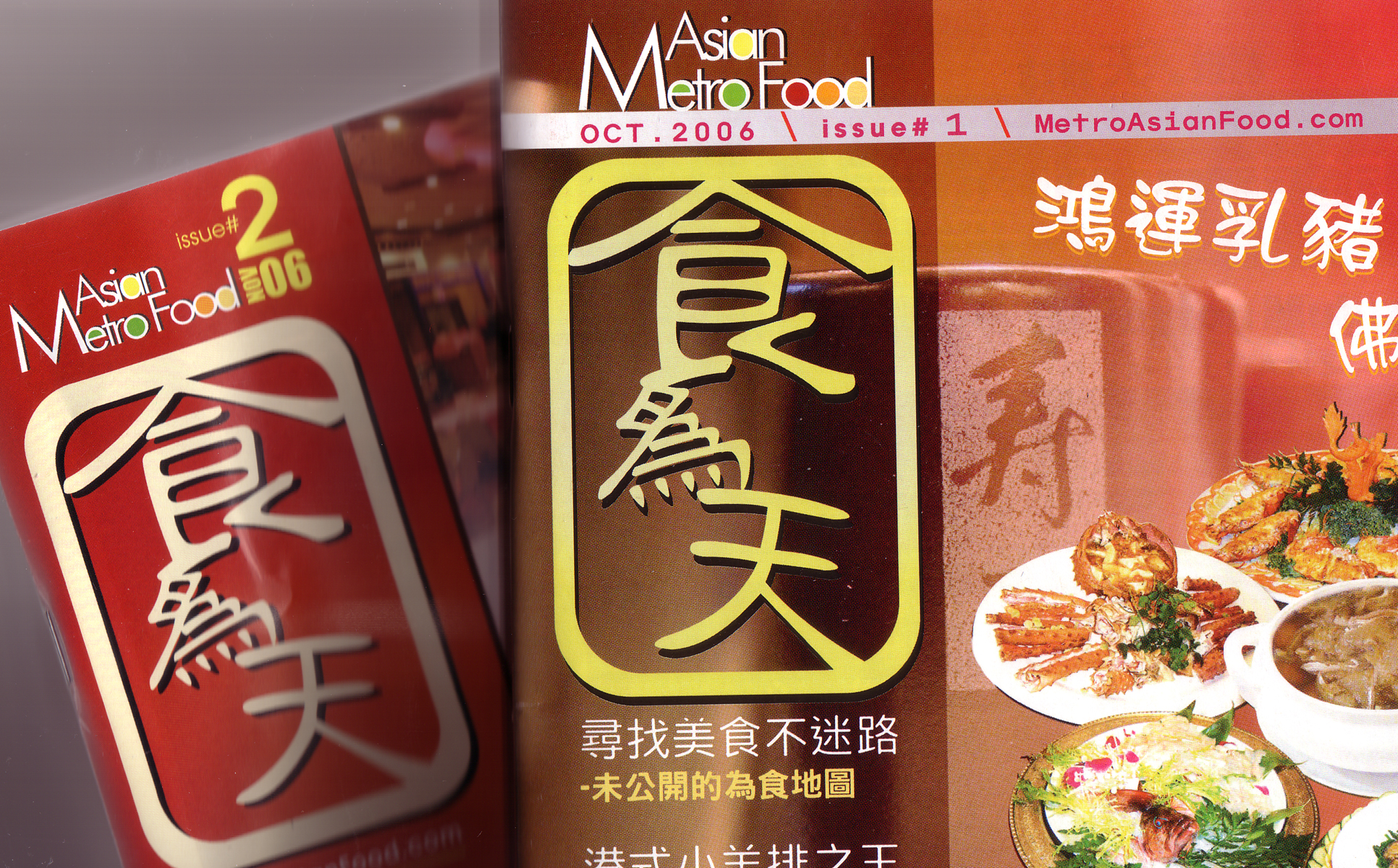 The second issue had four listed in Chinatown, several small dumpling places selling these jiaozi at five for a dollar. The ones we wrote about in this issue have chefs from that North-east region of China. The second issue has three more, they are Dongbei eateries in Brooklyn. We have yet to check them out. When in Los Angeles and later in San Francisco, no restaurant touted itself nor did others say there were any Dongbei restaurants. Like the first of the Chinese-Indian restaurants, Dongbei eateries are just entering the restaurant scene. If you learn of any, do advise; we will appreciate that. And, do note that Asian Metro Food does indicate a website, and as we go to press, that site says, in English, 'under construction.' We look forward to its completion and the availability of restaurant resources there, and, hope they keep it updated; it can be a fantastic resource. Listen up other cities, here is an item to emulate.
The second issue had four listed in Chinatown, several small dumpling places selling these jiaozi at five for a dollar. The ones we wrote about in this issue have chefs from that North-east region of China. The second issue has three more, they are Dongbei eateries in Brooklyn. We have yet to check them out. When in Los Angeles and later in San Francisco, no restaurant touted itself nor did others say there were any Dongbei restaurants. Like the first of the Chinese-Indian restaurants, Dongbei eateries are just entering the restaurant scene. If you learn of any, do advise; we will appreciate that. And, do note that Asian Metro Food does indicate a website, and as we go to press, that site says, in English, 'under construction.' We look forward to its completion and the availability of restaurant resources there, and, hope they keep it updated; it can be a fantastic resource. Listen up other cities, here is an item to emulate.
DRAGON FRUIT by William Chow is a small booklet with lots of information you will not find elsewhere. Want a copy? Contact the author at www.wchow.home.znet.com To purchase one. He advises these fruits grow on fences and elsewhere in the San Diego area. This beginners guide to growing these fruits is fascinating. 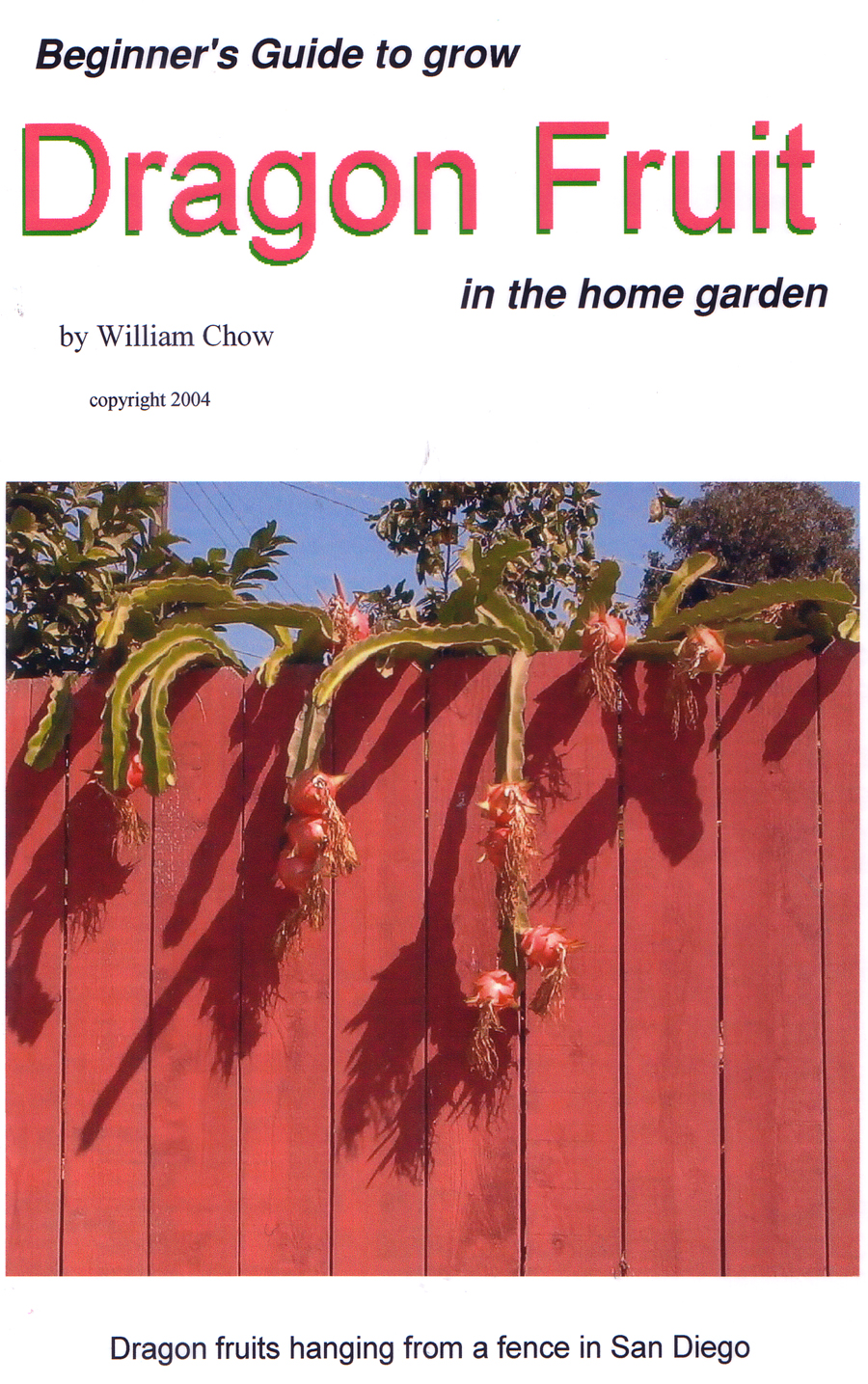 The cover illustrates their vines on a fence. Inside the booklet are other pictures for those who know but one variety of this fruit. The booklet gives their botanical names, discusses how to grow them, where to purchase the vines, places to purchase the fruit, and two books and seven web sites for still more information. Would that we lived in a similar climate zone, we would grow them post haste. Buying them breaks the bank as the price per pound is up there, as is their weight. The only thing missing is a recipe or two. If you know of any submit them to Flavor and Fortune for publication. In the meantime, below is the only one we know.
The cover illustrates their vines on a fence. Inside the booklet are other pictures for those who know but one variety of this fruit. The booklet gives their botanical names, discusses how to grow them, where to purchase the vines, places to purchase the fruit, and two books and seven web sites for still more information. Would that we lived in a similar climate zone, we would grow them post haste. Buying them breaks the bank as the price per pound is up there, as is their weight. The only thing missing is a recipe or two. If you know of any submit them to Flavor and Fortune for publication. In the meantime, below is the only one we know.
According to the author, this fruit originated in Central America. Others have said it comes from Malaysia. What the facts are we know not. Do tell us and our readers if you know the truth. Mr. Chow says lots of this fruit is now produced in Vietnam and in Taiwan; on that, we concur. He has also seen them in Hong Kong and in Shenzhen. Where have you seen them growing?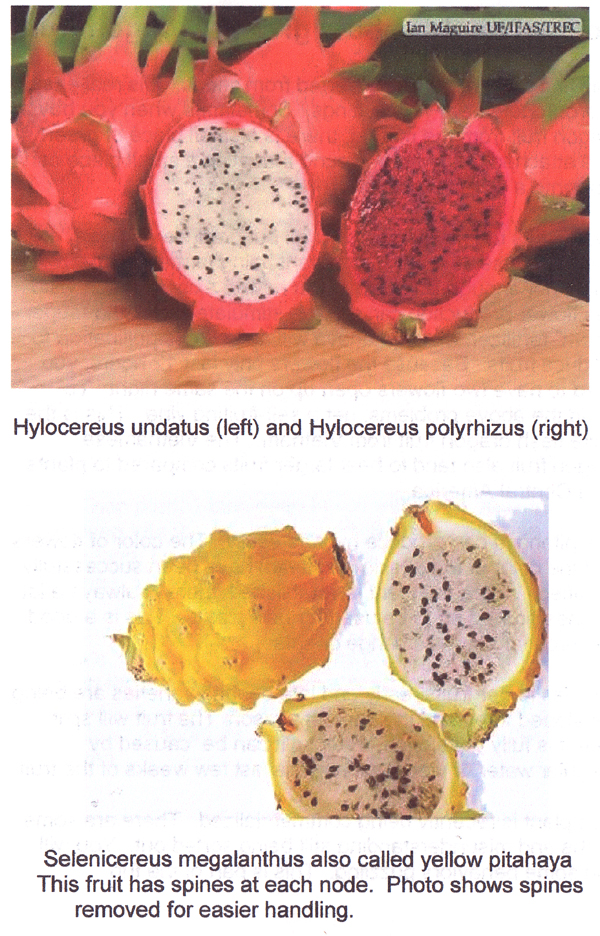
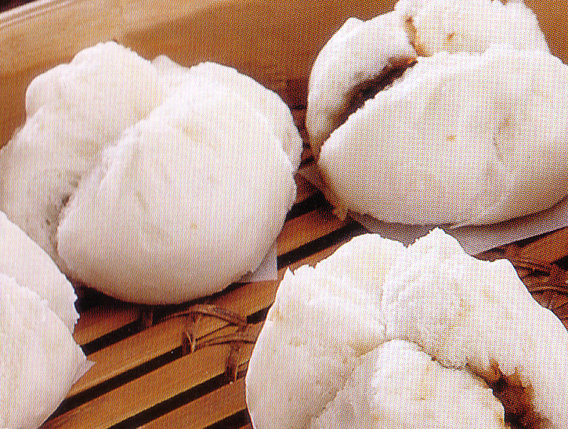 BAO ZI and JIAO ZI are sometimes written as baozi and jao zi, but no matter what your neighborhood eatery calls these items of dough or how they are spelled, bao zi are steamed and more recently can be baked, while, jiao zi are never baked and always steamed; they can also be pan-fried or deep-fried. Both are popular as street foods and both can be part of a dim sum meal.
BAO ZI and JIAO ZI are sometimes written as baozi and jao zi, but no matter what your neighborhood eatery calls these items of dough or how they are spelled, bao zi are steamed and more recently can be baked, while, jiao zi are never baked and always steamed; they can also be pan-fried or deep-fried. Both are popular as street foods and both can be part of a dim sum meal.
Bao zi is often a breakfast food, sweet or savory, plain or stuffed. That can be with meat, seafood, or vegetables. They are always made with a yeast dough and they look like a baked product even when they are not baked. Actually some are, but that is new. Originally, they were steamed.
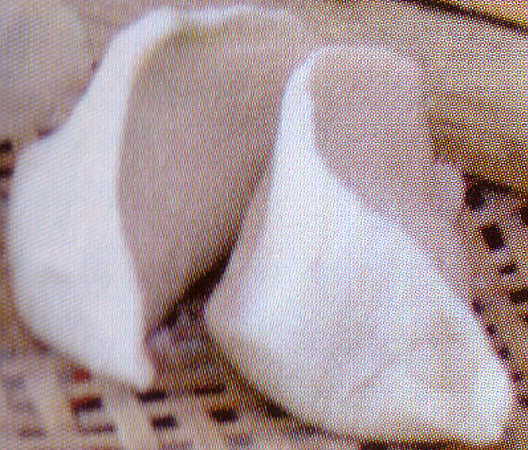 Jiao zi, on the other hand, are rarely, if ever, made with a yeast dough. They are made with flour and water, some with a mite of salt added. Most use wheat flour, though they can be made with other flours such as mung bean, sweet potato, and others. Once filled, they can be steamed, fried, pan-fried, or any combination of these techniques.
Jiao zi, on the other hand, are rarely, if ever, made with a yeast dough. They are made with flour and water, some with a mite of salt added. Most use wheat flour, though they can be made with other flours such as mung bean, sweet potato, and others. Once filled, they can be steamed, fried, pan-fried, or any combination of these techniques.
The recipes below are for the dough. Fillings vary throughout China. Keep in mind that jiao zi are always filled, bao zi sometimes are. Any mixture of sweetened cooked pork can be used in a bao zi; rarely is found in a jiao zi. Meat, poultry, fish or any combination thereof, with or without vegetables, or vegetables alone can be used as a filling.
| Dragon Fruit Pancakes |
|---|
2 eggs, lightly beaten 2 Tablespoons granulated sugar 1/2 cup evaporated milk mixed with the same amount of water 1/4 cup flour 1 Tablespoon vegetable oil 2 dragon fruit, peeled and diced into quarter-inch pieces 1 Tablespoon Chinese brown sugar, smashed leaving no lumps Preparation: 1. Beat eggs with sugar for one minute, then add milk-water mixture, the flour, and the vegetable oil. Stir well. 2. Heat non-stick pan and fry two to three tablespoons of batter tipping the pan to spread the batter and make a very thin pancake. When partially set, turn it over, fry the second side for half minute, the remove pancake to a plate. Repeat but do not stack the pancakes. 3. Put one pancake on a serving plate, put some diced fruit on it. Add another pancake, and more fruit until all pancakes and fruit are stacked. Then sprinkle the brown sugar on the top, cut into wedges, and serve. |
| Bao Zi |
|---|
2 teaspoons active dry yeast 1 Tablespoon sugar 1/2 teaspoon salt 4 cups flour Preparation: 1. Mix the yeast, sugar, and salt, and add one cup of lukewarm water. Set this aside for fifteen minutes before adding the flour and incorporating it into a dough. Knead until smooth, cover the dough with a damp cloth, and let it rest for half an hour. 2. Knead again, then roll sausage-shaped until it is about ten inches long. Cut into ten pieces, and flatten each one into a four inch circle. 3. Select a filling of your choice, if using one, and put one tablespoon of it in the center of one of the flattened pieces. Gather the edges and twist lightly to close (or enclose the filling). Put seam-side down on a tray and set aside until all are made, for about half an hour. Then, using a shape knife make a cut or two into the dough but not into or just slightly into the filling. 4. Put on parchment paper squares on a steamer rack over rapidly boiling water. Cover and steam for fifteen minutes, remove, and serve. |
| Jiao Zi Dough |
|---|
2 cups flour 1/2 teaspoon salt Preparation: 1. Mix flour and salt, and add three tablespoon lukewarm water. If dough is too stiff, add more by the tablespoon. 2. Make into a long sausage, and divide dough into twenty pieces. Flatten each one and roll into a four to five inch circle. 3. Put half teaspoon of a filling into the center, slightly dampen half the edge and fold the dough in half, pressing the edge slightly. Pleat the edges (ten to twenty pleats is common) and put in a steamer over rapidly boiling water, or boil the dumplings for ten minutes, then remove and serve with a dipping sauce, or fry them on one side (for color and flavor) before serving. |

Copyright © 1994-2025 by ISACC, all rights reserved
Address
3 Jefferson Ferry Drive
S. Setauket NY 11720